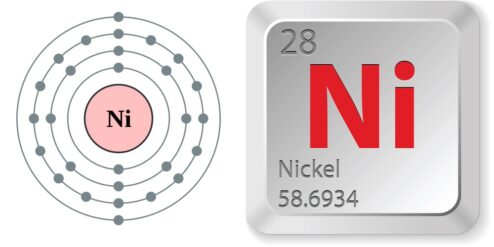Introduzione: Nickel is a naturally occurring metallic element that is widely used in various industries due to its strength, resistance to corrosion, and versatility. However, exposure to nickel can pose potential health risks, especially for those who are sensitive to it. Understanding the basics of nickel, its role in the human body, potential health risks, and ways to prevent and mitigate exposure can help individuals protect their health and wellbeing.
Understanding the Basics: What is Nickel?
Nickel is a silver-white metallic element that is found in the earth’s crust. It is the fifth most common element on earth and occurs extensively in the earth’s core. Nickel has a high melting point and is resistant to corrosion and oxidation, which makes it extremely versatile in various industrial applications. It is used in the production of stainless steel, coins, rechargeable batteries, and a plethora of other products. Nickel can also be found in certain foods and water. However, despite its widespread use, nickel can pose potential health risks if exposure levels are too high.
The Role of Nickel in the Human Body
In small amounts, nickel plays a crucial role in the human body. It is involved in the production of red blood cells and helps in the proper functioning of the kidneys. It also plays a role in hormone production and metabolism. Nickel is also a component of certain enzymes, which are essential for various biochemical reactions in the body. However, the human body only requires trace amounts of nickel. Excessive nickel can accumulate in the body and lead to health problems.
Potential Health Risks Linked to Nickel Exposure
Prolonged or excessive exposure to nickel can lead to a variety of health problems. High levels of nickel can damage the lungs, kidney, and liver. It can also cause nausea, vomiting, and diarrhea. Long-term exposure can lead to decreased lung function, chronic bronchitis, and an increased risk of lung and nasal cancer. Workers in industries that use or produce nickel are particularly at risk. Additionally, people living near nickel refineries or factories may also be exposed to higher levels of nickel.
Understanding Nickel Allergy: Causes and Symptoms
Nickel allergy is a common cause of allergic contact dermatitis — an itchy rash that appears when your skin touches a usually harmless substance. Nickel allergy is often associated with earrings and other jewelry for body piercings. Some people may also react to nickel found in certain food and water. Symptoms of nickel allergy include rash or bumps on the skin, itching, redness, dry patches, and in severe cases, blisters. If you suspect you have a nickel allergy, it is important to seek medical advice.
The Impact of Nickel on Environmental Health
Nickel can also have detrimental effects on the environment. It can contaminate water, soil, and air, posing risks to plants, animals, and humans. High levels of nickel in soil can affect plant growth and health, while in water bodies, it can harm aquatic life. The mining and refining of nickel also contribute to air pollution, leading to potential respiratory problems in humans and animals.
Prevention and Mitigation: Reducing Nickel Exposure
Preventing and mitigating nickel exposure is crucial for both human and environmental health. For individuals, this can involve avoiding nickel-containing jewelry, choosing nickel-free products, and maintaining a balanced diet to prevent excessive nickel intake. For industries, this involves adopting safer practices, such as using alternatives to nickel where possible, implementing effective waste management strategies, and ensuring workers are adequately protected.
Conclusioni: While nickel is a versatile and widely used element, it is important to be aware of the potential health risks associated with excessive exposure. By understanding the basics of nickel, its role in the human body, and the potential health risks, individuals can take steps to protect their health. Furthermore, industries can adopt safer practices to mitigate environmental impact.
Per approfondire:
- Agency for Toxic Substances and Disease Registry – Nickel: Provides detailed information on nickel, its uses, and health effects.
- National Institute for Occupational Safety and Health – Nickel: Offers information on workplace safety and health topics related to nickel.
- World Health Organization – Nickel in Drinking-water: Discusses the impact of nickel in drinking water on human health.
- American Academy of Dermatology – Nickel Allergy: Provides information on symptoms, causes, and treatment of nickel allergy.
- Environmental Protection Agency – Nickel Compounds: Discusses the environmental impact of nickel and its compounds.


